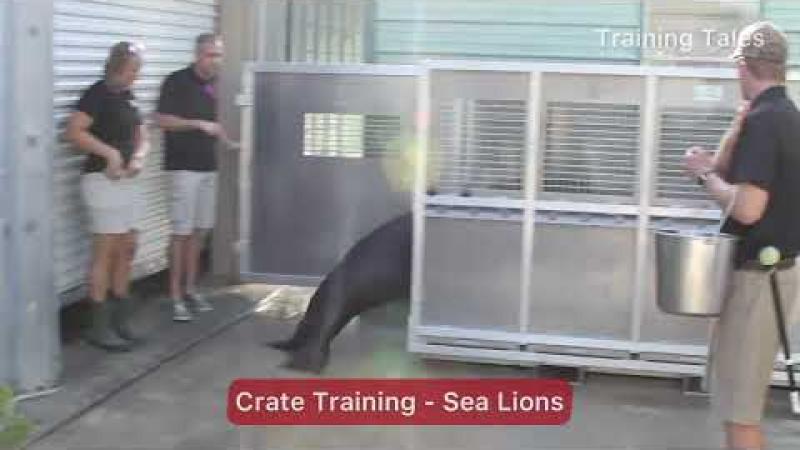Animal information provided by Chris Killilea
Training is an essential part of animal care at the Columbus Zoo and Aquarium! Our expert staff works closely with the animals to train them on behaviors to better help us provide the best care to them. During these bi-monthly segments, we will focus on one training behavior and how different animals around the Zoo demonstrate it.
This month’s Training Tales is about crate behavior. Throughout this post, you will see different examples of animals going into a crate for a various reasons, such as moving to another zoo, moving inside for winter, or going to our Animal Health Center for a checkup. Transporting an animal anywhere can potentially be stressful for the keepers and the animals involved. Keepers work to train an animal to enter the crate voluntarily, which greatly reduces the stress involved in these procedures.
Crate training usually begins with desensitizing the animal to the crate itself, such as letting the animal have access to the crate throughout the day or exploring it on their own. Once the crate isn’t “scary” anymore, a target may be introduced to guide the animal into the crate. The animal will then receive treats for entering it. The last step is getting the animal used to the door shutting behind them and sitting in the crate for some time. The amount of time the animal sits in the crate can be increased during each session based on the animal’s comfort level.
One example of the results of our crate training process involves the seals and sea lions who were were living in Florida while their habitat was being built at the Columbus Zoo. Zoo Animal Care teams regularly worked with them to walk voluntarily into the crate and relax for their ride back to Ohio. As you will see in the video, our Animal Care team practiced moving the crates with the animals in them (Video Bonus: You’ll get to see other animals using crates for journeys to the Animal Health Center, to move indoors for winter, and more!).
Once the seals and sea lions arrived at the Columbus Zoo, the training didn’t stop there! Pinniped keeper Megan said, “8-year-old California sea lion, Toby, and 7-year-old harbor seal, Hillie, were both trained for a crate behavior with two different goals in mind. Toby was preparing for a 15-hour transport to another facility, while Hillie needed medical attention for dental concerns. Although the goals were different, the steps taken to train this behavior for both animals were almost identical. A lot of desensitization and heavy reinforcement history were used to make these areas very positive for the animals. After about a month of countless repetitions into the crate, Toby loaded up on transport day in under two minutes and had an extremely calm and successful ride to South Carolina. The crate behavior was so positive for Hillie, that even after her medical procedure, which could have been potentially aversive, she returned into her crate on her own. Both Hillie and Toby are great examples of how the crate, which can sometimes hold a negative connotation, can be viewed as a safe and positive place for our animals.”
Thanks for joining us for Training Tales! The training at the Zoo doesn’t stop here–we still have more behaviors to show in the coming months. Be sure to stop back soon to see what else these amazing animals can do.











